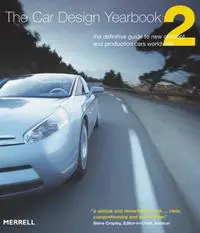Automotive Book Review: The Car Design Yearbook 2
Book Review: The Car Design Yearbook
By Stephen Newbury
Merrell Publishers Ltd, New York, NY
Reviewed By Carey Russ
A renaissance has been taking place in automotive design over the past few years. The industry is now at a stage where good design is vitally important, and not only for high-priced sports and luxury cars. Concept cars from the international auto show circuit have a way of appearing virtually unchanged in showrooms, and automotive design can appeal not only to the car enthusiast but to artists and others as well. Surprisingly, until recently design received only a passing mention in the annual publications covering the auto industry, most of which are primarily concerned with motorsports. When The Car Design Yearbook 1 was published last year, it filled a void for the automotive enthusiast.
And it appears that The Car Design Yearbook 1 was successful, because The Car Design Yearbook 2 has just been published. Like The Car Design Yearbook 1, it is a European publication, published by Merrell Publishers Limited (New York office: 49 West 24th St., New York 10010 NY). It's written by Stephen Newbury, and can be found in your local bookstore or from any of the online booksellers.
As with The Car Design Yearbook 1, The Car Design Yearbook 2 is an overview of concept and production vehicles that were new or significantly redesigned during the year previous to its publication - in this case late 2002 and most of 2003. It covers all new production cars worldwide - ``clean sheet'' designs or those with major generational changes as opposed to the more common minor sheetmetal and specification yearly changes - and all concept cars made for the international auto shows.
In a delightfully dry British style, author Newbury provides clear, concise, insightful commentary on and basic specification for 110 vehicles that debuted in 2002 and 2003, as well as an exploration of design trends and profiles of important designers. There are plenty of well-chosen color photos of all vehicles, and of the chosen designers and their most important cars. New this year is a commentary on the history of and reasoning behind concept cars. It makes for fascinating reading, and is followed by examples of concept vehicles and the production machines that evolved from them.
The cars, trucks, and other vehicles described range in alphabetical order from the Acura TSX sports sedan to the production Volvo VCC ``Versatility Concept Car.'' Between lies both beauty and bizarreness. There are production vehicles that you've already seen on the streets of the U.S., like the Cadillac SRX, the Chrysler Pacifica, the latest Ford F150, and imports like the Honda Accord and Lexus RX330. There are Japanese and European production vehicles not imported here, from the Audi A3 to the TVR T350. And there are exotics, such as the Ferrari Enzo and Lamborghini Gallardo.
As last year, some of the most fascinating things (and, yes, ``things'' is the correct word) covered are the outright no-production-intended concept vehicles. With a lack of truly bizarre Japanese entries, this category is milder than it was last year. But the French and Italians provide plenty of visual entertainment. The Fiat Marrakech looks like a Jolly for the 21st Century, minus the fringed surrey top. The Citroen C-Airdream gets top billing and this year's cover shot, redefining beauty and aerodynamic style in much the way the company's DS sedans did over 40 years ago.
There are many more creations besides these inside of The Car Design Yearbook 2. An informative and entertaining read, it belongs on the bookshelf of any car enthusiast.



